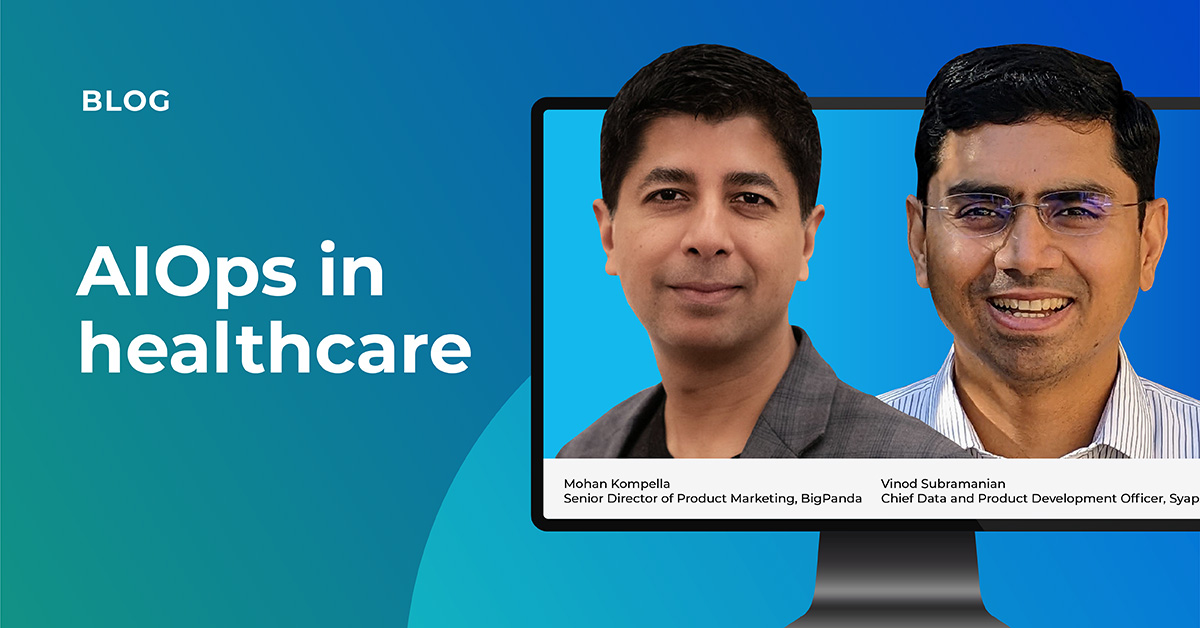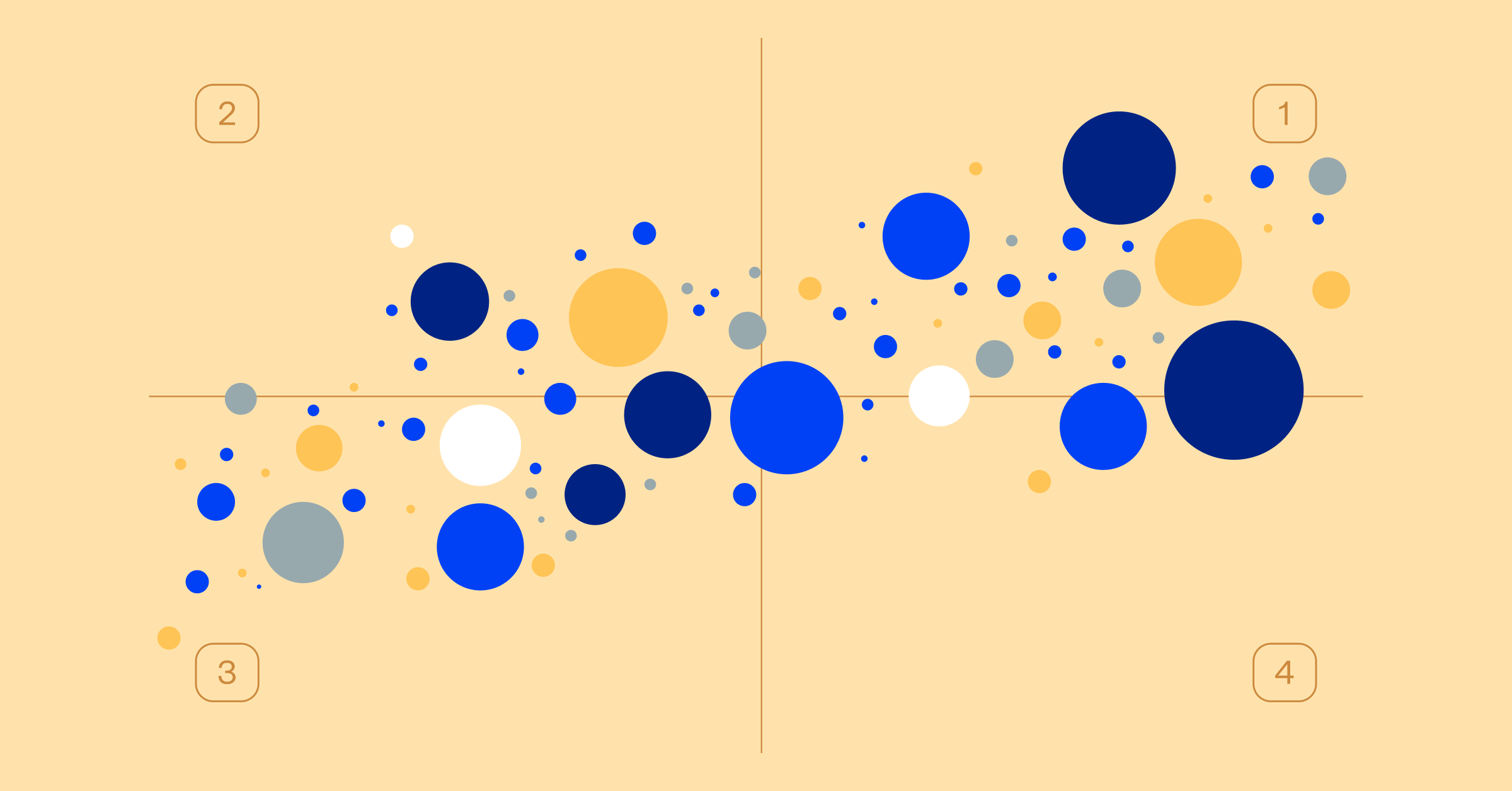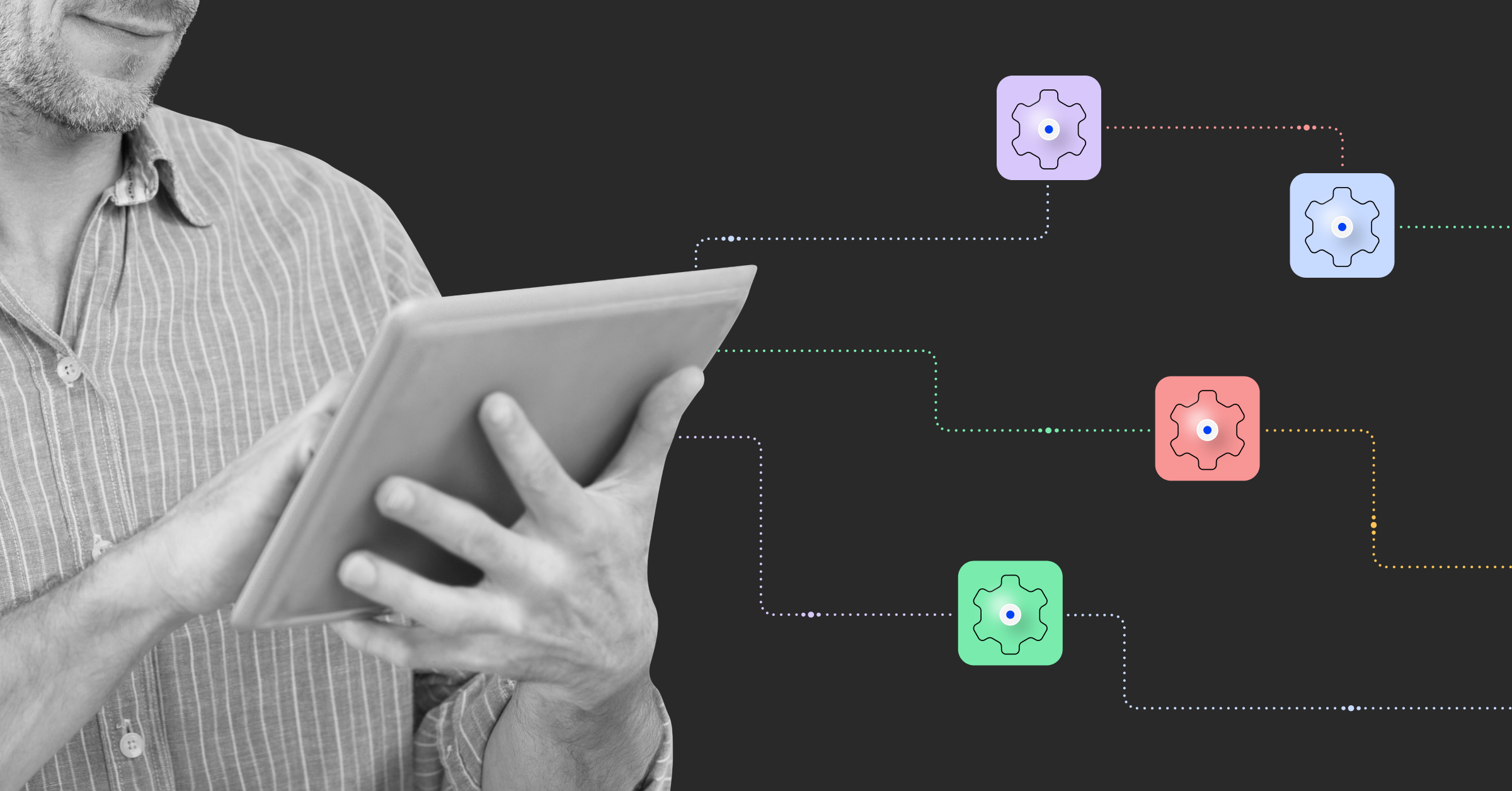Webinar: AIOps in healthcare

Healthcare around the world is constantly evolving. The amount of data being generated daily from every appointment and interaction, no matter how small or large, needs to be processed and analyzed in order to improve patient outcomes. The data must be accurate, stored, accessible and secure. Without a core infrastructure of smart IT, any outcomes are extremely challenging to generate, and data must be available in seconds for doctors to make life-saving decisions. The bottom line? Stakes never have been higher for IT service management in healthcare who must provide a high degree of dependability.
Better healthcare starts with great IT.
In this webinar, BigPanda VP of Product Marketing Mohan Kompella and Syapse’s Chief Data and Product Development Officer Vinod Subramanian talk about what is and isn’t working in healthcare ITOps and how AIOps fits into healthcare. Syapse is a real-world evidence software company working with health systems and life science.
The healthcare landscape is changing
The pandemic completely altered the way healthcare operates: vaccines must be developed; systems to advance those vaccines are required; healthcare options, like telehealth, are needed to provide care for all patients; and massive testing initiatives have been spurred. While advances in process used to be slow and incremental, they are now accelerated, desperately needed and happening in big strides. To better meet demand, we had to work as a society to distribute health resources—and we used more apps and other digital tools than ever. We are seeing a data science and digital revolution where artificial intelligence (AI), machine learning and digital health are all being applied in innovative ways to help make the previously impossible possible for patients.
For those in healthcare IT, their approach to IT operations needs to be just as resilient. The development of the vaccine, as well as other innovations in response to the problems the pandemic created, gave data and technology like AI a central role in the future of care innovation and delivery.
Where do AIOps and IT fit into healthcare?
AIOps, or artificial intelligence for IT operations, makes the healthcare experience we know today possible. Vinod said it best, “We deal with around 85 million record updates on a daily basis. We process around 10.9 billion patient records. While the transaction stats don’t mean anything, it’s about the patient outcome. The volume of data that we interact with to enable an outcome and impact patient care is almost similar to the amount of data that we interact with internally within our platform and our core services.” Without great IT infrastructure in place and someone behind the scenes making sure it’s all running smoothly, none of the digital world that we know today would be possible, let alone some of the incredible healthcare systems and processes that have been adopted in recent years to keep people safe and healthy. Reliability is a tenet of IT, and it’s crucial in the healthcare space as well. Availability and dependability of the infrastructure can be a matter of life or death in healthcare. In addition, the entire user experience and improvements to that experience depend on stable IT service management infrastructure.
Preferred IT models
The reality many teams are facing today stems from having too many observability tools. Because of the proliferation of observability and monitoring tools, operations teams are all drowning in a tsunami of data being generated by these best-in-class tools. Diversity with tools, even if they are best-in-class, is not the correct course of action to keep your IT teams happy and on track. BigPanda takes the guesswork out of IT infrastructure because of its compatibility. By leveraging AI and machine learning, BigPanda can get more intelligence out of your existing investments and tools—and, in turn, deliver better outcomes for customers.
Learn how to get started with AIOps today
To learn more about AIOps, some of the common issues healthcare organizations encounter and how to get started, click here to watch our self-guided demo.




